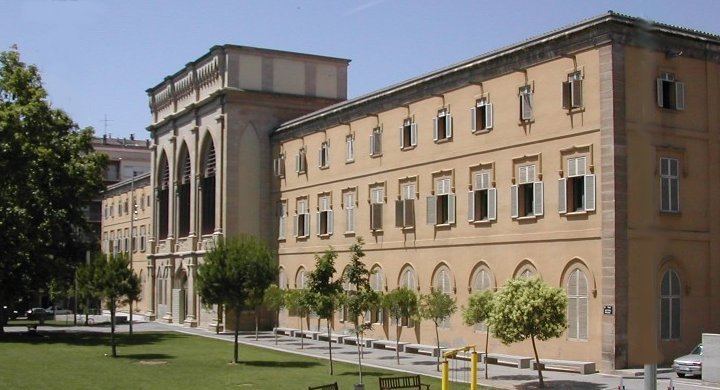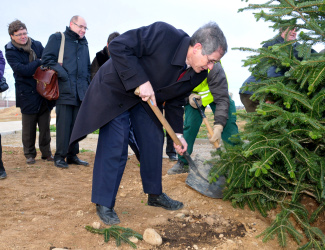27th January 2009
Download pdfThe first trees are planted in Arborètum
The latter space was the first to be inaugurated with the planting of a fir tree from the Caucasus region. This specimen will be share its space with other fir trees, as well as walnut trees, Constantinople acacias, false banana trees, iron-trees and hazelnut trees from Byzantium. The first group of trees also includes common and American oak trees, honey locusts, black walnuts, eastern redbuds, tulip trees and giant thujas among others. All the trees have been grown in Girona.
The remaining specimens are due to be received and planted in the next two months. The Botanic garden will have a total of 843 trees of 174 varieties, 41 palm trees and other palmiform species of 4 different species, 52,180 shrubs of 172 varieties and 390 bamboo trees of 6 varieties, grown in different European countries.

|
The landscapes reproduced in Arborètum will include the following: the Chilean forest, the North-African cedar forest, the Californian forest, the Mediterranean watercourse, myrtle, pine tree, evergreen and oak woods, cork oak and European beech groves, bank forests, American and Mediterranean oak groves, Asian mesophytic and euxinic forests, an area for bamboo trees, taxodium trees, sequoia and taiga forests. Water will be the natural point of convergence for all these landscapes, representative of different planet zones.
Arborètum is intended as a space for research and teaching available to lecturers, researchers and students at UdL, and accessible for visitors with physical or visual impairments. The project also includes the construction of a building that will host offices, visitor services and laboratories. Construction works are due to be finished in spring.
Last modification:




